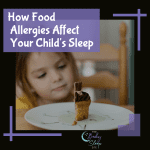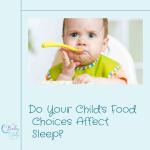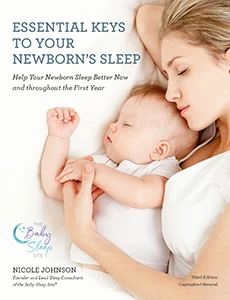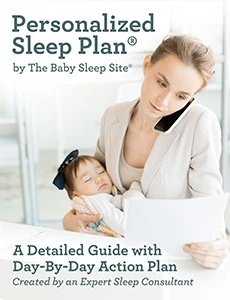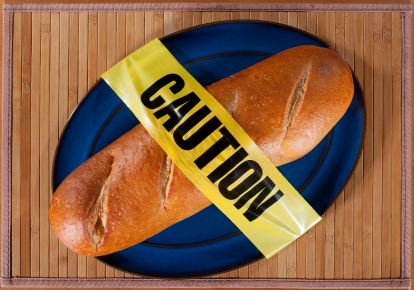
Welcome again to our article series on food allergies! We’ve covered a lot of ground up to this point. We’ve examined the differences between food allergies, food sensitivities, and food intolerances. We’ve also looked at the symptoms of each, as well as how to get a diagnosis. If you haven’t read those articles yet, be sure to go back and take a look.
Today’s article is part 2 of our Common Childhood Food Allergies article. In part 1, learned more about dairy and egg allergies; today, we’ll examine nut, wheat, and soy allergies in more detail.
NOTE: If you believe your child has a nut, wheat or soy food allergy, intolerance or sensitivity, please consult with your child’s doctor for further testing and information.
Peanut and Tree Nut Allergies & Sensitivities
If your baby has a nut allergy, here are some things to keep in mind:
- Nut allergies are usually divided into two categories: peanut and tree nut. Tree nuts include macadamia nuts, brazil nuts, cashews, almonds, walnuts, pecans, pistachios, beechnuts, hazelnuts, hickory nuts, and pine nuts. And peanuts are actually legumes; they aren’t nuts at all!
- Tree nut allergies are less common than peanut allergies, but they can be just as severe.
- Children who are allergic to peanuts are more likely to be allergic to tree nuts as well (and vice versa.)
- Doctors usually advise patients with peanut and tree nut allergies to stay away from ALL nuts; there’s a high likelihood of cross-contamination at facilities that process nuts since they usually process all nuts on the same equipment.
- Children who have peanut allergies are more likely to have other food allergies, too.
- Peanut allergies in kids are on the rise — the rates of children with peanut allergies tripled between 1997 and 2008.
- Although the old recommendation was to avoid offering peanuts or peanut products to your child until after a year old, there is evidence that suggests that peanuts and peanut products should be introduced between 4 and 11 months old UNLESS your infant has an early-onset atopic disease, such as severe eczema, or egg allergy in the first 4 to 6 months. In that case, you may want to have an allergist implement a peanut introduction plan. The AAP now recommends introducing infant-safe forms of peanut earlier. There is also evidence that supports introducing peanuts through breast milk. Be sure to talk to your doctor about the latest recommendation about introducing peanuts and peanut products to your baby.
- Peanut and tree nut allergies are usually severe and acute, and they cause anaphylaxis more often than other food allergies. If your toddler has a nut allergy, you should carry an Epi pen with you at all times.
Wheat Allergies & Sensitivities
If your baby has a wheat allergy or sensitivity, remember the following:
- Wheat and gluten allergies are often considered interchangeable, but they’re not the same thing. If your baby’s allergic or sensitive to gluten, the problem is the combination of protein fragments found in grains like wheat, rye, oats, and barley. If he’s allergic to wheat, then the problem is just with the wheat protein.
- A gluten allergy is called Celiac disease. Celiac is a chronic, life-long condition; those who have it will never outgrow their allergy to gluten and will need to be on a super strict NO GLUTEN diet for the rest of their lives to stay healthy.
- Some babies and toddlers may have acute and severe wheat allergies; others may have wheat sensitivities that cause chronic, less severe symptoms.
- Many, many foods contain wheat; this makes it difficult to know which foods are safe and which to avoid. Use this list to help you make food choices for your baby, and read labels carefully.
Soy Allergies & Sensitivities
If your baby has a soy allergy or sensitivity, consider these points:
- True soy allergies are relatively rare. Soy sensitivity is much more common; it causes mild, chronic symptoms that aren’t life-threatening or severe.
- Soybeans aren’t a major staple in the average American’s diet, but soy is used as an ingredient in a huge variety of foods. As you make food choices for your baby, remember to read labels carefully.
- Most parents first detect their babies’ soy sensitivities when the babies react to soy-based infant formula.
- Soy milk and cheeses are commonly offered as an alternative to children with dairy allergies; this can be complicated if the child also has a soy allergy.
Outgrowing Peanut, Tree Nut, Wheat, and Soy Allergies & Sensitivities
Most children outgrow their wheat and soy allergies before adulthood. Many outgrow them before starting kindergarten; almost all have outgrown them by 10 years old.
Peanut and tree nut allergies are a different story, however. These are usually considered lifelong allergies, since only 20% of children outgrow their peanut and tree nut allergies.
Peanut, Tree Nut, and Wheat Substitutes
Peanut, tree nut, and soy allergies might not present huge challenges when you’re cooking, but a wheat allergy?! That’s a tough one to work around. Thankfully, food allergy sufferers have more substitution options than ever before.
Peanut and Tree Nut Substitutions
| Nut Product | Substitution |
| Peanut Butter | WOWButter® is made from roasted soybeans*, and it’s processed in a facility that’s 100% nut-free, so there’s no risk of cross-contamination. SunButter® is another option; it’s made from sunflower seeds and is also produced in a facility that’s completely nut-free. ) |
Wheat Substitutions
| Wheat Product | Substitution |
| Breads, Cereals, and Pastas | There’s an increasing variety of gluten-free and wheat-free products available. Check your local grocery store for gluten-free and wheat-free items; if you can’t find them there, try sources like Whole Foods or Trader Joe’s (or even Amazon.com!) |
| Flour | When you’re baking, for 1 cup wheat flour, you can substitute 7/8 cup rice flour, 5/8 cup potato starch flour, 1 cup corn flour, or 1 cup soy* flour + 1/4 cup potato starch flour. There are now many Gluten-Free flour-blends on the market that allow for equal part substitutions for wheat flour. |
*Remember, soy is itself an allergen; if your baby also has a soy allergy, don’t use these as substitutes.
For extensive information on cooking for babies and toddlers with food allergies, visit the Kids With Food Allergies Foundation website.
My Baby Has Food Allergies/Sensitivities: How Do I Handle Them?
We’re glad you asked? That’s the topic of the last post in our Food Allergies & Sensitivities series:
Part Five: Handling Your Baby’s Food Allergies and Sensitivities
Everything You Need To Know About Starting Solids – All In One e-Book!
 What if you could find everything you needed to know about starting your baby on solid foods – when it’s best to start solids, how to introduce solids, complications, food allergies, etc. – in one easy-reference guide? Now you can! Your Baby’s Start To Solid Foods: A Comprehensive Guide will walk you through every step of starting solids. Plus, your e-Book package includes several bonus materials, designed to maximize your success in starting solids. You’ll get a thorough guide to treating constipation, a dietitian’s advice on how to avoid 5 common solid-foods mistakes, and a weekly meal plan for your baby’s first year. Grab your e-Book today, and ensure your baby has the healthiest possible start to solid foods!
What if you could find everything you needed to know about starting your baby on solid foods – when it’s best to start solids, how to introduce solids, complications, food allergies, etc. – in one easy-reference guide? Now you can! Your Baby’s Start To Solid Foods: A Comprehensive Guide will walk you through every step of starting solids. Plus, your e-Book package includes several bonus materials, designed to maximize your success in starting solids. You’ll get a thorough guide to treating constipation, a dietitian’s advice on how to avoid 5 common solid-foods mistakes, and a weekly meal plan for your baby’s first year. Grab your e-Book today, and ensure your baby has the healthiest possible start to solid foods!
Is your baby allergic to nuts, wheat, or soy? If so, how did you find out? What were your baby’s symptoms? What substitutions do you use in your kitchen?
References:
https://www.jacionline.org/article/S0091-6749%2815%2900785-X/full
https://www.aappublications.org/news/2019/03/18/atopy031819
https://jamanetwork.com/journals/jama/article-abstract/2673956
https://pediatrics.aappublications.org/content/142/Supplement_4/S234.2


